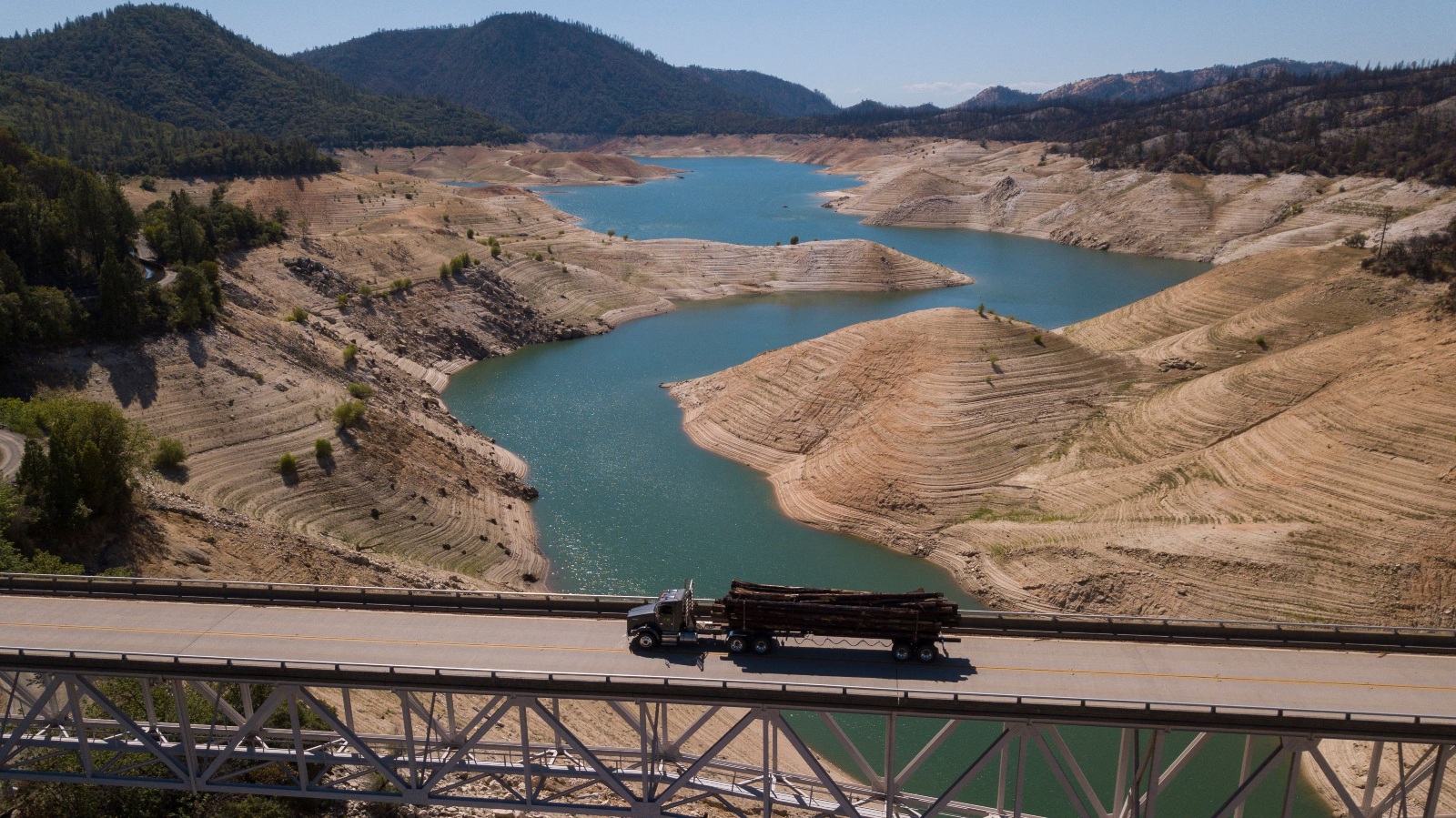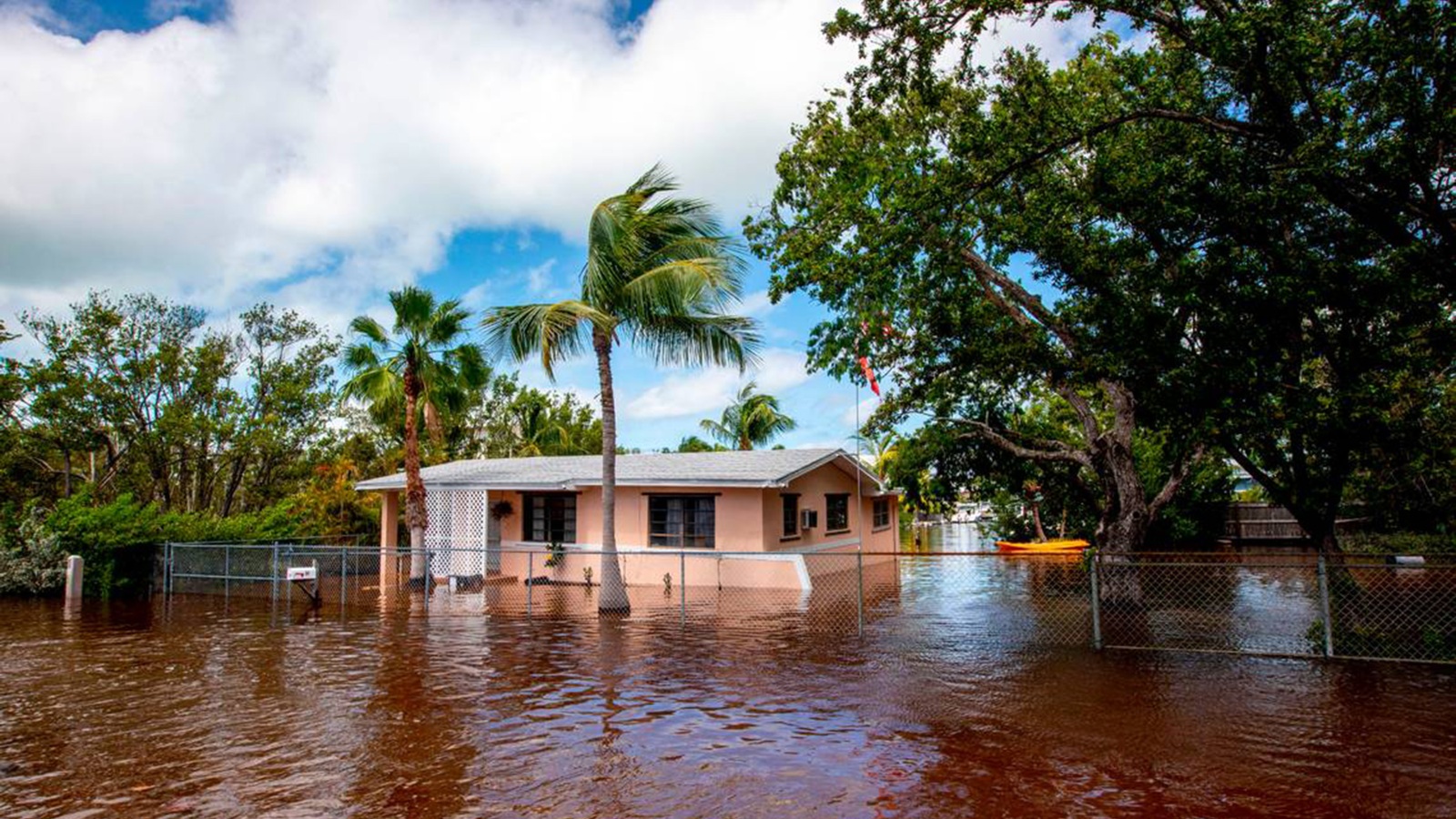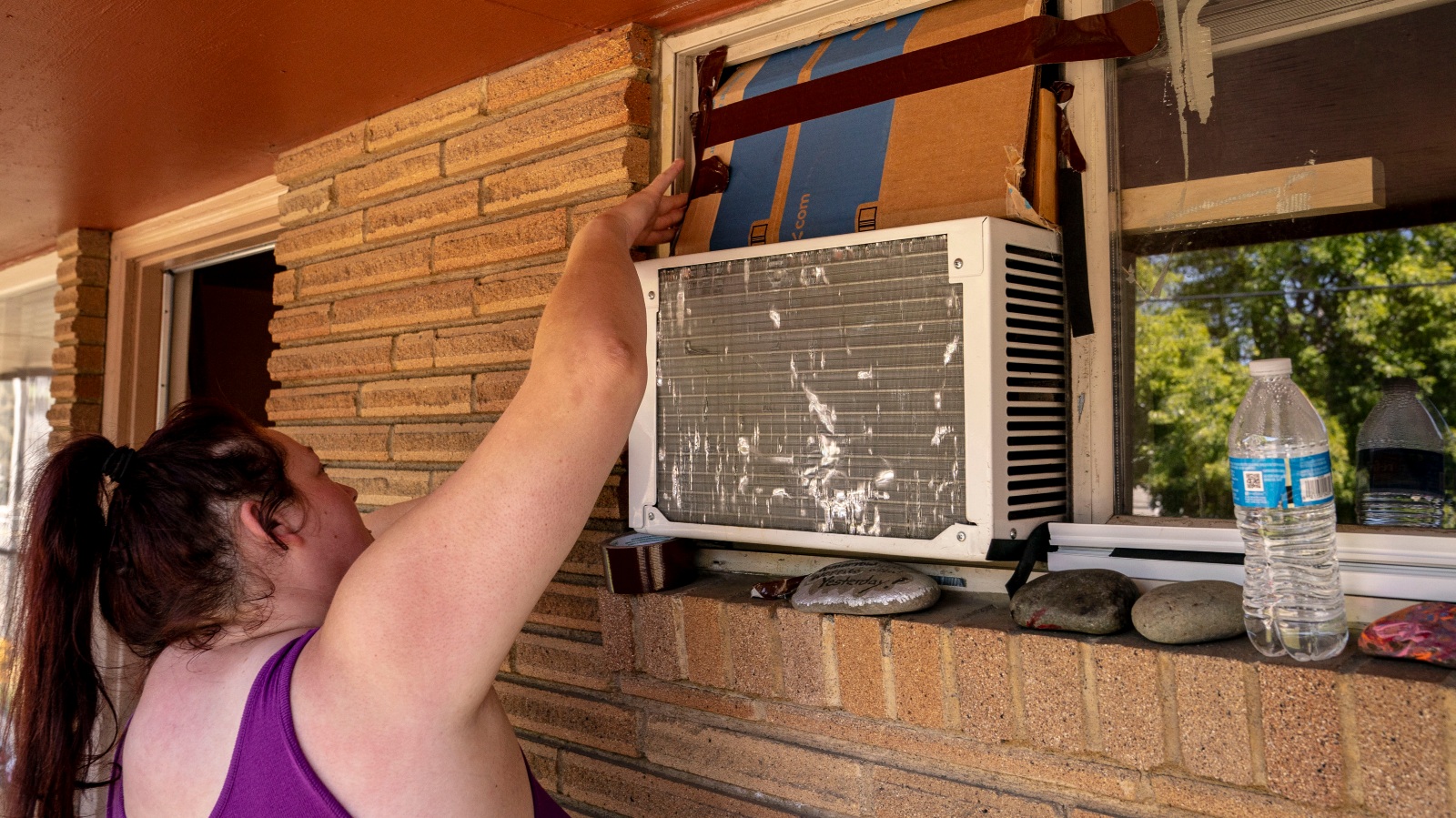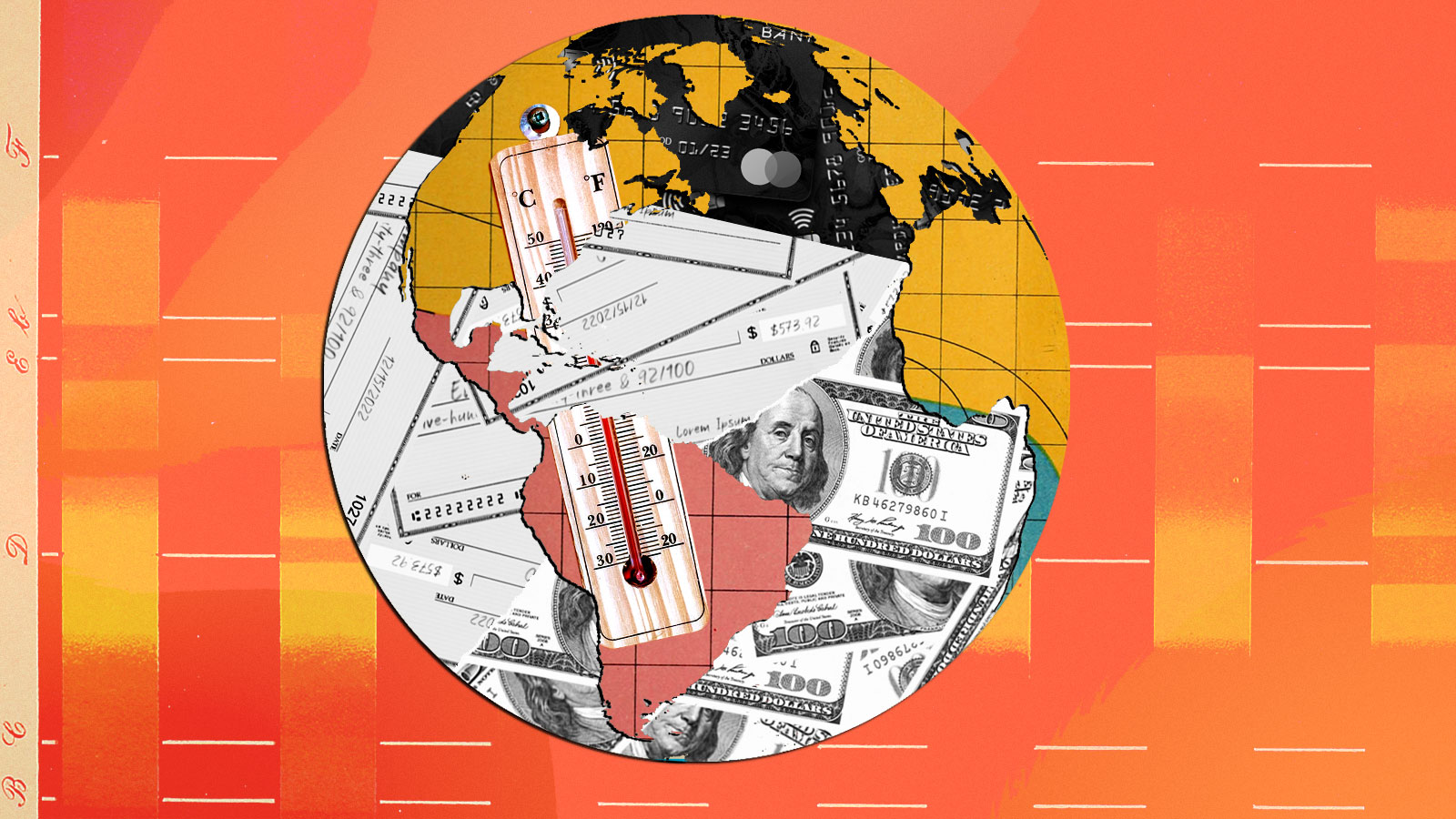Inflation dominated news headlines and American psyches in 2022. Overall, consumer prices jumped an average 7.1 percent this year, with the cost of just about everything going up, from cars to coffee and gas to groceries. The trend triggered a bitter midterm election campaign, prompted a series of aggressive interest-rate hikes from the Federal Reserve, and fears about an impending recession.
The causes were numerous, from the war in Ukraine to the post-pandemic economic recovery. But in many sectors, the specter of climate change was also lurking behind these higher costs. Extreme swings in temperature and precipitation caused shortages and soaring prices for essential utilities like electricity, heat, and water. A series of catastrophic weather disasters scrambled the supply chains for vegetables and staple grains.
Many of us tend to think that we’re still immune to the direct effects of the climate crisis, but make no mistake — those effects are already here, and they’re hitting our wallets. Here is a look at some of the ways warming came back to bite us at the cash register in 2022.
Grocery bills
Food prices rose about 10 percent this year, one of the highest rates in decades. The surge in grocery bills has been spurred by pandemic supply chain issues and Russia’s invasion of Ukraine, but climate change played a bigger role than many people realize. Searing heat and other extreme weather hurt crops and livestock around the globe, driving up food costs in a phenomenon known as “heatflation.”
This summer, an unprecedented heat wave in China ruined the corn and soy crops used to feed pigs, sending the cost of pork, the country’s staple meat, soaring. Spain and Italy experienced a stretch of 100-degree temperatures and drought conditions that slashed olive harvests; by November, the price of extra-virgin olive oil in Spain, the world’s largest olive oil producer, had risen 45 percent compared to the previous year. Hurricanes hurt Florida’s citrus crop and snapped Puerto Rico’s plantain trees in half; the Western U.S. baked in a drought that threatens to increase food prices for the years to come.
It’s not just anecdotes: One analysis of seasonal temperatures and price indicators in 48 countries found that hot summers had “by far the largest and longest-lasting impact” on food prices, an effect that lasted nearly a year. Experts warn that flooding, drought, wildfires, and other climate-enhanced disasters will continue to leave shoppers paying a premium in the years ahead.
Water bills
Delivering water to homes and businesses is a high-cost operation. Municipalities and utilities have to pump the water from a river or reservoir, treat it so it’s safe to drink, and send it through hundreds of miles of pipes and canals. They also have to keep repairing and upgrading all that infrastructure year after year. The cost of maintaining this delivery system stays more or less the same, but the amount of money these groups earn back depends on how much water they deliver to customers.

In dry years like this one, utilities have to withdraw less water from dwindling reservoirs, which means they have less to sell, and have to raise prices to make up the difference. That’s currently happening in California, where many Central Valley residents are struggling to afford water even as local wells go dry; around 12 percent of state residents are behind on their water bills, owing as much as $1 billion in payments. As municipal supplies fell this year, it meant there was also less excess water available for trading on agricultural spot markets, causing prices to soar for farmers: The Nasdaq Veles California Water index rose by around 56 percent between January and June of this year, reaching an all-time high.
Other climate-driven extreme weather has impacted water prices in other ways. In wetter areas, extreme precipitation events caused unprecedented damage to utility infrastructure and forced costly repairs – a burden most often passed down to ratepayers. And in agricultural areas around the Great Lakes, excessive heat is increasingly causing fertilizer-laden water bodies to form harmful algae blooms. According to an analysis earlier this year, for instance, the cost of treating water in Toledo, Ohio, to eradicate this bacteria is now nearly $20 per resident per year — a cost incorporated into consumers’ water bills.
Insurance premiums
We rely on home insurance to help us recover after a disaster, but policies are getting more expensive and harder to obtain as floods, fires, and hurricanes intensify. These changes were acutely felt this past year. According to Policygenius, an insurance marketplace, 90 percent of U.S. homeowners saw their premiums increase from May 2021 to May 2022, with an average jump of $134 annually.
Homeowners in flood-prone areas all over the country saw huge price hikes in recent months. The National Flood Insurance Program, or NFIP, which insures more than 5 million properties, is in the process of rolling out a new pricing system, raising rates in many coastal areas to more accurately reflect existing flood risk. The Federal Emergency Management Agency, the federal group that administers the NFIP, estimated that some 66 percent of policyholders would see their premiums jump by up to $10 per month under the new risk scale, 7 percent by up to $20 per month, and 4 percent more than $20. The hikes have been so severe that hundreds of thousands of homeowners have dropped their NFIP policies altogether.

Also this year, half a dozen insurers in Florida collapsed after their financial backers grew too concerned about hurricane risk; the state is now seeing the consequences of this breakdown, with price hikes in the wake of Hurricane Ian. On the opposite coast, several national insurance companies tried dropping customers in fire-risky areas of California to reduce their exposure to future disasters. As these insurers disappear, coverage gets more expensive, putting homeowners in a bind: They must either pay skyrocketing prices or drop their policies and live without a safety net.
Utility bills
Climate change is impacting the frequency and severity of heat and cold spells in different parts of the United States – and in 2022, these periods of extremes made it harder for people to afford their home heating and cooling costs. One in six U.S. households are currently behind on their utility bills.
Let’s start in the winter: Around 90 percent of U.S. households use either electricity or natural gas as their main source of heat. This past January, average household electricity rates soared by 8 percent, the highest increase in over a decade. Parts of the country experienced severe cold that month as warming temperatures in the Arctic destabilized the polar jet stream, sending frigid air southward. This winter, the U.S. Energy Information Administration estimates that average household heating costs for natural gas will increase by 28 percent, in part due to forecasted colder-than-average temperatures.
This past summer, millions of Americans also dealt with stretches of extreme heat, which strained electric grids and caused household energy and air conditioning bills to skyrocket. The National Energy Assistance Directors Association estimated that Americans’ electric bills increased 20 percent due to the heat waves, jumping to an average $540.
Low-income families of color, both in urban and rural settings, are being hit the hardest. Black, Latino, and Indigenous households are more likely than white households to have their power cut off due to unpaid utility bills. “You have to choose between having a normal holiday season or maybe paying this bill or that bill. It’s all about survival,” said Linnea Jackson, General Manager of the Hoopa Valley Tribe’s Public Utilities District in Northern California. “Those increased costs are really impacting tribal communities.”
Jackson says that in addition to higher energy costs from summers and winters with periods of hotter highs and lower lows, also known as weather whiplash, climate-driven disasters like wildfires, drought, and powerful storms all disrupt service and drive up costs. “It’s only getting worse. People are struggling to come up with the cost to afford basic electricity,” Jackson said.

In Bethel, Alaska, Sophie Swope, a Yup’ik environmental activist, says that thawing permafrost is causing houses to shift and crack, forcing people to spend more money on heating. Higher fuel costs also weigh heavily on communities like Swope’s, where many essential supplies have to be shipped in. “Everything is just so much more expensive,” Swope said.
Electricity prices
High energy bills this year weren’t just a result of heat waves and cold fronts. The cost of power itself spiked all over the country. That’s in large part due to Russia’s war in Ukraine, which drove a scarcity in natural gas supply around the world and upped the cost of producing electricity from power plants. The Energy Information Administration estimates that residential customers paid 8 percent more for electricity, on average, than in 2021.
The war may be the primary cause, but some parts of the country also saw rate hikes due to climate-related extreme events like storms, drought, and wildfires. In June, 1 million customers in Louisiana saw fees added to their bills, as much as $25 for some households, to help the electric utility Entergy recover costs related to storm damage from hurricanes Laura, Delta, Zeta, and Ida, as well as Winter Storm Uri in February 2021.
In California, customers of the largest utility in the state, Pacific Gas & Electric, or PG&E, started the year off with a rate increase that was driven in part by the costs of wildfire prevention. It didn’t end there. Just two months later, PG&E bumped its rates again to cover the rising cost of natural gas. The company said it had eaten up a lot of its natural gas supply the previous summer when the drought was limiting hydropower output, and had to buy more.
The Western Area Power Administration, a federal agency that sells power from government-owned hydropower dams to utilities throughout the West, told Grist that reduced hydropower generation this year due to the megadrought put “upward pressure on power rates in some pockets of the West.”
Jake Bittle, Kate Yoder, Joseph Lee, Brett Marsh, and Emily Pontecorvo contributed to this story.



